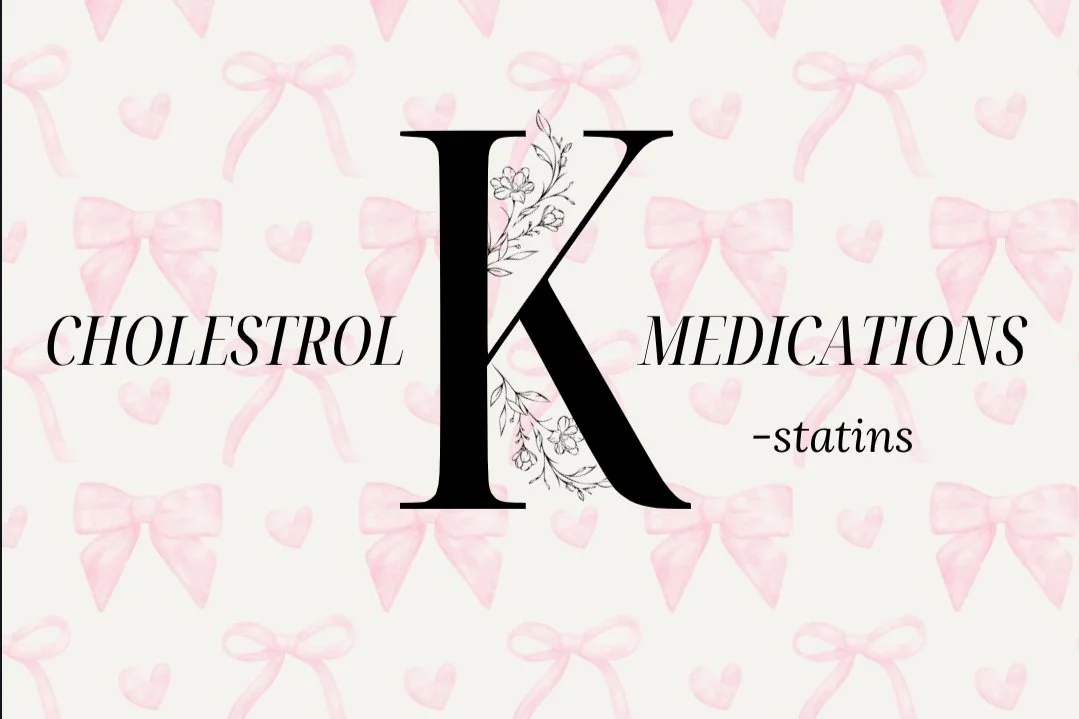



ricyclic antidepressants (TCAs) are used to treat depression, anxiety, and chronic pain by increasing serotonin and norepinephrine in the brain. Common examples include amitriptyline and imipramine. They work by regulating mood and emotions, and are also helpful for insomnia. "Tricyclics Tame Thoughts" – they balance brain chemistry to improve mental health and manage pain.

Bronchodilators are medications that work by relaxing the muscles around your airways, allowing them to open up and make breathing easier. Commonly used for conditions like asthma and COPD, they can provide immediate relief by improving airflow and reducing symptoms like wheezing and shortness of breath. Key examples include albuterol, salmeterol, and ipratropium. These medications are essential for managing both acute flare-ups and chronic respiratory conditions.

PPIs are medications that reduce stomach acid production by inhibiting the proton pump in the stomach lining. Recognizable by their "-prazole" suffix (e.g., omeprazole, pantoprazole), they are commonly used for acid reflux, peptic ulcers, and Zollinger-Ellison syndrome.

Thiazide diuretics are medications that help the body eliminate excess fluid and sodium, making them effective for treating high blood pressure and fluid retention. Common examples include hydrochlorothiazide, chlorthalidone, and indapamide. They work by reducing sodium reabsorption in the kidneys, leading to increased urine output and lower blood pressure.

Antihistamines are medications that counteract histamine, the chemical responsible for allergic reactions. From seasonal allergies to hives and even motion sickness, these drugs provide relief by reducing symptoms like sneezing, itching, and swelling. Recognizable names like loratadine, cetirizine, and diphenhydramine work by blocking histamine receptors, preventing discomfort.

Benzodiazepines are a widely used class of medications known for their calming and sedative effects. Commonly prescribed for anxiety, insomnia, seizures, and muscle relaxation, these drugs work by enhancing GABA, a neurotransmitter that slows down brain activity. Recognizable by their "-pam" and "-lam" endings—like diazepam and alprazolam—benzodiazepines help bring balance to the nervous system.

Tetracyclines are a class of antibiotics that work by inhibiting bacterial protein synthesis, stopping the growth of infections. Common examples include doxycycline and minocycline. They are widely used to treat acne, respiratory infections, Lyme disease, and even malaria prevention.

Potassium-sparing diuretics are a unique class of diuretics that help the body eliminate excess fluid while preventing the loss of potassium. Unlike other diuretics, which can lead to potassium depletion, these medications work by blocking sodium reabsorption in the kidneys, helping to maintain electrolyte balance.

Angiotensin Receptor Blockers (ARBs) are a class of medications designed to keep blood vessels relaxed and open by blocking the effects of angiotensin II, a hormone that causes vasoconstriction.
Easily recognized by their “-sartan” suffix—like losartan and valsartan—these drugs are commonly prescribed for high blood pressure, heart failure, and kidney protection in diabetes.

Beta blockers, ending in “-lol,” are key medications used to manage high blood pressure, heart rhythm problems, and heart failure. Common examples include atenolol (Tenormin), metoprolol (Lopressor), and propranolol (Inderal).

Calcium Channel Blockers (CCBs) are medications that help relax blood vessels and reduce heart strain by blocking calcium from entering heart and blood vessel cells. This leads to lower blood pressure, improved blood flow, and reduced heart workload. Many CCBs end in "-dipine" (such as amlodipine and nifedipine), though some exceptions exist, like diltiazem and verapamil.

ACE inhibitors, recognized by the "-pril" suffix, are key for lowering blood pressure and protecting the heart. Common examples include lisinopril, enalapril, and ramipril.

Statins are easy to recognize—just look for the "-statin" suffix! These cholesterol-lowering drugs include atorvastatin (Lipitor), simvastatin (Zocor), and rosuvastatin (Crestor).